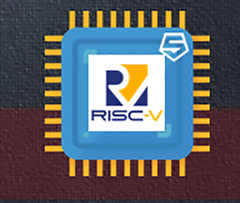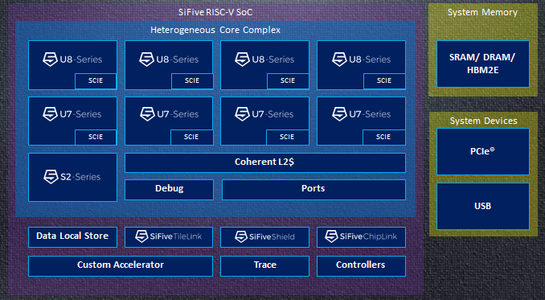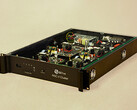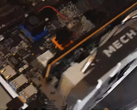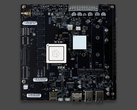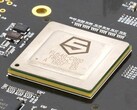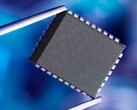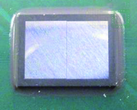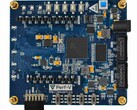When it comes to PC CPUs, the x86 architecture turned x64 in later years is by far the only one that stood the test of time. It is no wonder that Intel and AMD are still embracing it and every new generation of chips launched by the two giants is further building upon and expanding its capabilities, yet this is not to say that there are no alternatives. The open source RISC-V architecture, for instance, has been seeing some appreciation lately, as India is using it for its home-grown CPU chips that are meant to soon match Intel’s models. Previously thought to be too far behind compared to the x64 capabilities, RISC-V has received a significant performance boost in the past few years, and, thanks to SiFive’s latest designs, it looks like the architecture can also be a viable alternative to ARM’s mobile cores we see omnipresent in today’s smartphones.
SiFive is a new company founded by the people behind the RISC-V instruction set proposed back in 2010. In just 2 years, SiFive managed to push the envelope for RISC-V mobility cores to a point where the latest U8-Series design can compete with ARM’s Cortex-A72 cores. SiFive claims that the new U8-Series is the first RISC-V-based design to feature superscalar, out-of-order architecture. Similar to ARM’s cores that are meant for different workloads, SiFive’s U84 variant is a high-performance, energy-efficient core that is designed as a multi-purpose solution, while the U87 variant is specifically built for “vector processing.”
Details on the U87 are scarce, and SiFive seems to be focusing more on the U84 for now, as it mentions that the chip is built on the latest 7 nm tech, which boosts performance by 3.1 times over the older 16 nm U74 design. The jump from 16 nm to 7 nm also allows a 2.3 times increased instruction-per-clock count, plus it allows for 1.4 times higher frequencies. The U84 can be grouped in 9-core clusters that are similar to ARM’s 2+6 core clusters.
Moreover, the U84 is said to offer 1.5 times better performance per Watt and twice the area efficiency compared to the Cortex-A72. Granted, that is a 3-year-old design, and SiFive should probably compare the U84 to the newer A76 cores from ARM. Still, the new U8-Series has its merits, and the next iteration of cores coming from SiFive could eventually prove worthy competitors for ARM’s solutions.




